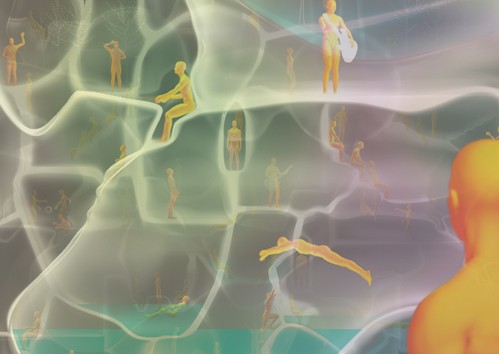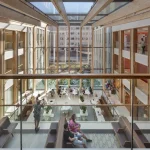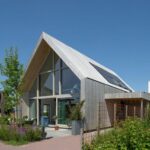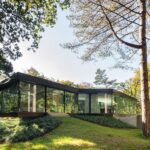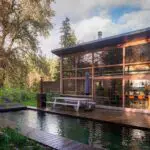The Why Factory Delft, MVRDV Dutch Building Project, Photos, News, Design, Images
The Why Factory Nanotechnology in Architecture, NL
Dutch Think Tank, Delft, The Netherlands design by MVRDV Architects : Architecture Information
Design: MVRDV, Architects
The Why Factory Publishes Research on Nanotechnology in Architecture
The Why Factory’s new book looks at life in a fully adaptable environment.
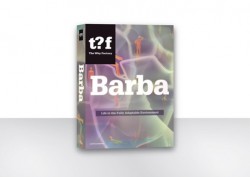
image : The Why Factory
18 Nov 2015
The Why Factory Research on Nanotechnology in Architecture
Rotterdam, November 16, 2015 – Is the end of brick and mortar near? How could nanotechnology change buildings and cities in the future? A speculation of The Why Factory on this topic is illustrated in the best tradition of science fiction in the newly published book Barba. Life in the Fully Adaptable Environment. It forms the point of departure for a series of interactive experiments, installations and proposals towards the development of new, body-based and fully adaptive architectures.
A beautiful existential story comes alive. A story closer to us then you’d ever have thought. Imagine a new substance that could be steered and altered in real time. Imagine creating a flexible material that could change its shape, that could shrink and expand, that could do almost anything. The Why Factory calls this fictional material Barba. With Barba, we would be able to adapt our environment to every desire and to every need. To buy the book online, visit nai010 publisher’s website: http://www.nai010.com/en/barba
Barba. Life in the Fully Adaptable Environment, published by the Why Factory and nai010 publishers, illustrates how a series of current technological innovations might change the way we build and live in cities in the future. The first inspiration came from ‘Barbapapa’, an illustrated cartoon character from the 1970s. Invented and drawn by Talus Taylor and Annette Tison, the friendly, blobby protagonist of the eponymous children’s books and television programme could change his shape to resemble different objects. With Barbapapa’s smooth morphosis in mind, The Why Factory wondered how today’s advancements in robotics, material science and computing might allow us to create environments that transform themselves as easily as Barbapapa could. Neither Barbapapa’s inventors nor anybody else from the team behind the cartoon were involved in this project, but The Why Factory owes them absolute gratitude for the inspiration of Barbapapa.
“Barba is a fantastic matter that does whatever we wish for” says Winy Maas, Professor at The Why Factory and MVRDV co-founder. “You can programme your environment like a computer game. You could wake up in a modernist villa that you transform into a Roman Spa after breakfast. Cities can be totally transformed when offices just disappear after office hours.”
Barba lets the user programme and morph their personal environment.
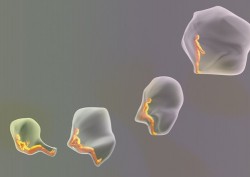
image : The Why Factory
The book moves away from pure speculation, however, and makes steps towards real world application, including illustrated vision, programming experiments and applied prototypes. As co-author of the book, Ulf Hackauf, explains, “We started this book with a vision, which we worked out to form a consistent future scenario. This we took as a point of departure for experiments and speculations, including programming, installations and material research. It eventually led us to prototypes, which could form a first step for making Barba real.”
Barba developed through a series of projects organized by The Why Factory and undertaken in collaboration between Delft University of Technology, ETH Zürich and the European Institute of Innovation and Technology. The research was developed over the course of numerous design studios at the Why Factory and elsewhere. Students and collaborators of the Why Factory have all contributed to the book.
Life in Barba, a completely programmable world.
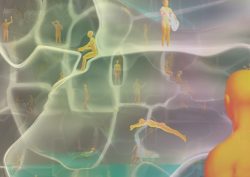
image : The Why Factory
The Why Factory explores possibilities for the development of our cities by focusing on the production of models and visualisations for cities of the future. Education and research of The Why Factory are combined in a research lab and platform that aims to analyse, theorise and construct future cities. It investigates within the given world and produces future scenarios beyond it; from universal to specific and global to local. It proposes, constructs and envisions hypothetical societies and cities; from science to fiction and vice versa. The Why Factory thus acts as a future world scenario making machinery, engaging in a public debate on architecture and urbanism. Their findings are then communicated to the wider public in a variety of ways, including exhibitions, publications, workshops, and panel discussions.
The Halo Maker and Space Moulder, ways in which the user can interact with the space around them.
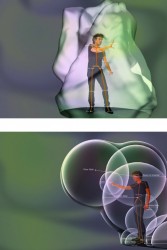
image : The Why Factory
The Why Factory is a global think tank, run by MVRDV and the Delft University of Technology and led by professor Winy Maas. Education and research of The Why Factory are combined in a research lab and platform. It explores possibilities for the development of our cities through the production of models and visualizations for cities of the future. The results of this research programme are being presented in a series of books—the Future Cities series—published in association with nai010 publishers in Rotterdam. Barba is the eighth book in The Why Factory’s Future Cities series, and follows Visionary Cities, The Why Factor(y), Green Dream, Vertical Village, Hong Kong Fantasies, City Shocks and We want world wonders.
For information please contact The Why Factory’s Ulf Hackauf – U.D.Hackauf@tudelft.nl, or visit www.thewhyfactory.com
MVRDV Architects
The Why Factory Research on Nanotechnology in Architecture images / information from MVRDV Architects
Location: Delft, Netherlands
Architecture in The Netherlands
Contemporary Dutch Architecture
Netherlands Architecture Designs – chronological list
Amsterdam Architecture Walking Tours by e-architect
The Why Factory


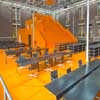
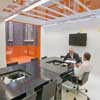
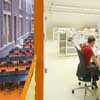

photos © TU Delft
The Why Factory
The Why Factory project Green Dream: A visualization of the dramatic lack of progress in sustainable construction. All LEED certified buildings in the world cover only a small part of Midtown Manhattan.
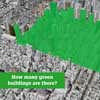
The Why Factory: Islands that use solar thermal power generation are used in a sustainable energy network and bring beauty back into the debate on Green.

The Why Factory project: The Why Factory: New Leisure landscapes by Mick van Gemert and Tanya Martinez The Death of Leisure City/ graduation lab
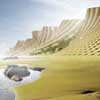
Delft Buildings
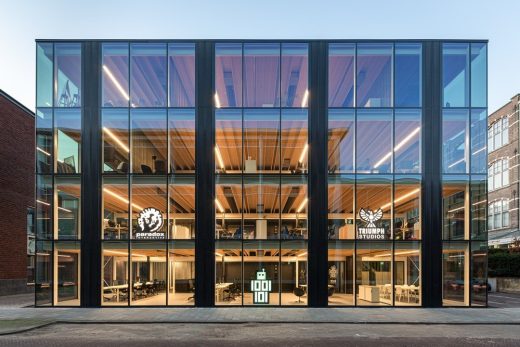
photograph © Lucas van der Wee
mecanoo architecten : Delft Architects firm
Comments / photos for The Why Factory Research on Nanotechnology in Architecture page welcome
Website: thewhyfactory.com

